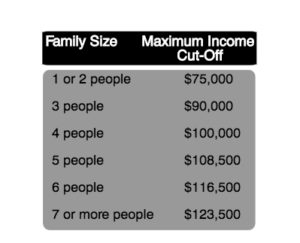The New Brunswick provincial government is following in other provinces’ footsteps by increasing tuition relief for middle-class students for the 2017-18 school year.
The new Tuition Relief for the Middle Class (TRMC) program, available to New Brunswick full-time students enrolled in a university or college on or after Aug. 1, will further subsidize the cost of higher education in middle-class families.
The TRMC surpasses the coverage provided by the Tuition Access Bursary (TAB)—a similar tuition relief initiative for the 2016-17 school year—that offered financial assistance to college and university students whose families earned $60,000 or less per year.
The New Brunswick government confirmed the TAB fell short of its target to help approximately 7,100 students—23 per cent of the student population—instead helping only 5,100 out of 9,000 applicants.
According to the provincial government’s website, about 9,000 students will be eligible for the new TRMC program and tuition coverage will be based on the size of family— between one and more than seven members—and their gross family income. The maximum income cut-off to qualify for the TRMC ranges from $75,000 for a family of one or two people, to $123,500 for a family of seven or more.
A university student with $6,200 in tuition fees from a family of three with an income of $65,000 would have 89 per cent of tuition costs covered, when the TRMC is combined with existing Canada Student Grant coverage, according to the provincial website.

“[The TRMC] will help make post-secondary education more affordable and accessible for families with multiple children attending university or community college,” the government of New Brunswick’s website stated.
In a CBC article, Donald Arseneault, the minister of post-secondary education, training and labour in New Brunswick, said the new program would keep schools competitive in the face of a shrinking provincial population.
The move comes as the Ontario Student Assistance Program (OSAP) is poised to offer “free tuition,” based on the average cost of tuition in Ontario, to full-time university or college students whose parents are earning up to $50,000 per year.
Although the maximum family income cut-off is not based on family size and is lower for OSAP compared to the TRMC, the provincial government’s website stated grants can fully cover tuition costs.
The program will begin during the 2017-18 academic year for eligible OSAP students who don’t have enough money from other sources, the website said, such as scholarships or RESPs, and who have not already received the lifetime limit from the Ontario Tuition Grant.
– File photo






